

I [Aymeric Mansoux] found it mentionned with the mark “<L>” instead of “(L)” in the lyrics of a filk song 17 inspired by the Dune science fiction saga by American author Frank Herbert. The lyrics were signed “<L> 1992 by Jeremy Buhler” with a note at the end of the file “PS - <L> means copyleft”.
Aymeric Mansoux, Sandbox Culture (2017)

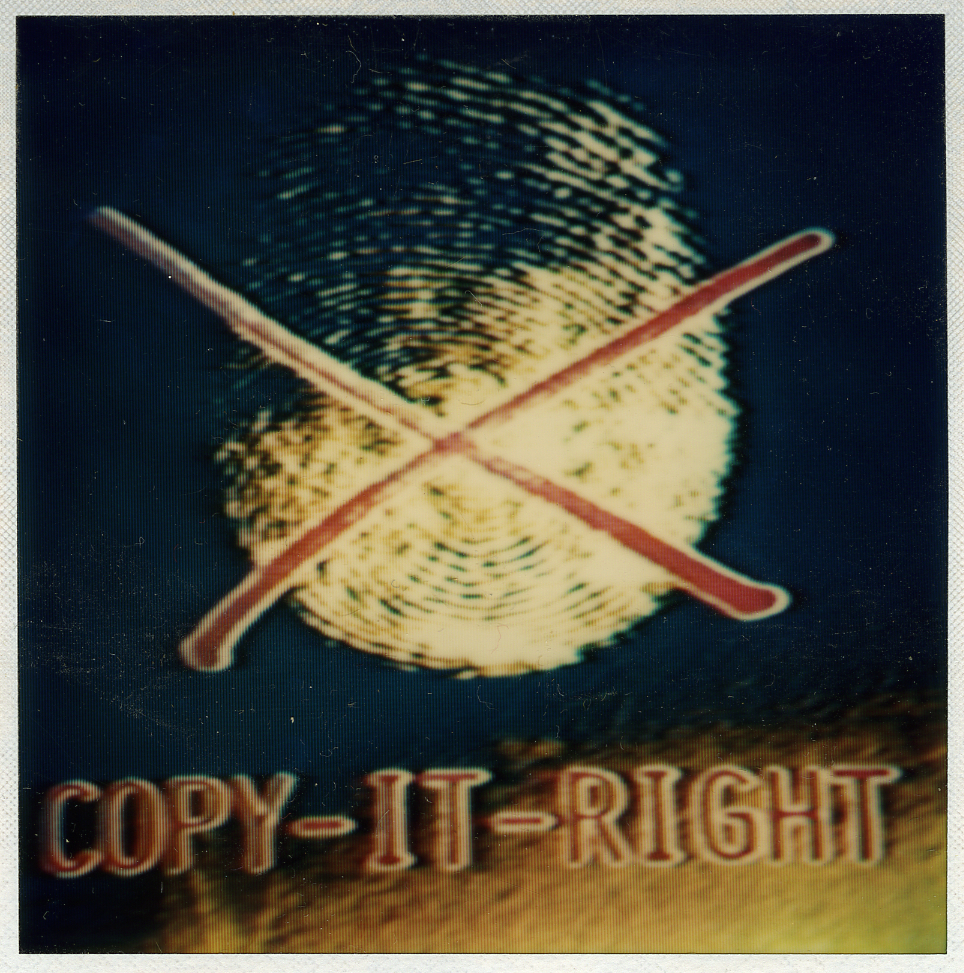
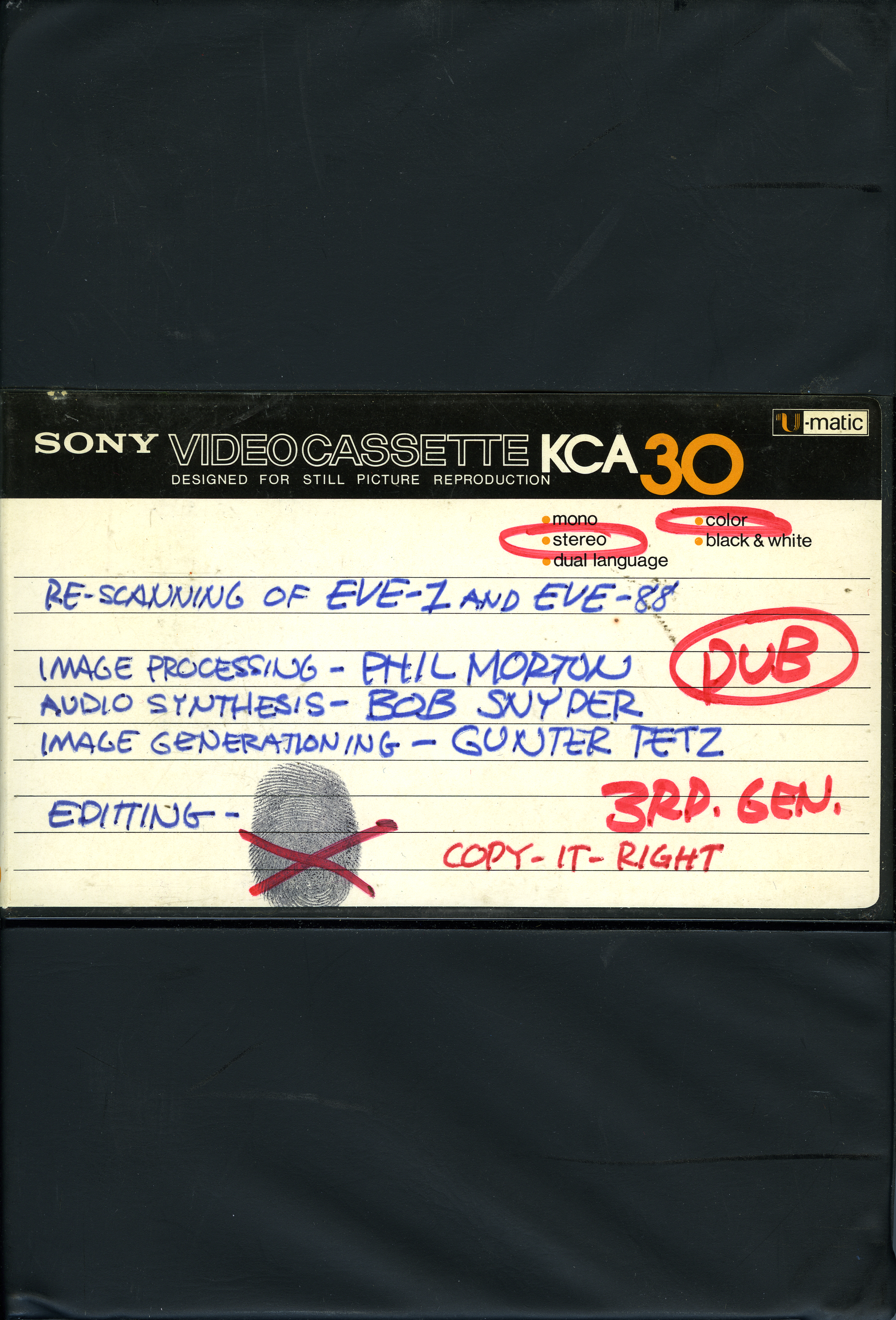


Morton developed an approach he called COPY-IT-RIGHT, an anti-copyright approach to making and freely sharing Media art. The Distribution Religion and Morton’s individual and collaborative Media art works were released under his COPY-IT-RIGHT license. COPY-IT-RIGHT encouraged people to make faithful copies, caring for and distributing the work as widely as possible.

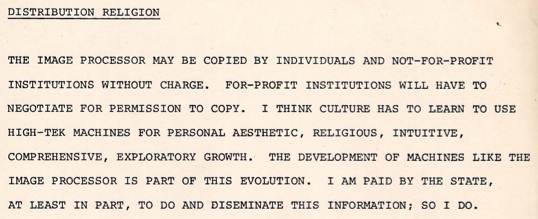

(…) [O]ne day in 1984 Stallman received by mail a programming manual that had been borrowed by American hacker and computer artist Don Hopkins. On the envelope a stickers reading “Copyleft (L)” was used to seal the small package. Hopkins had bought a pack of stickers at a science fiction convention, where hackers, including Stallman, often gathered and where it was common for them to organise and share rooms, notably for “@” parties in which people with email addresses could meet each other. 14 According to Hopkins, at that time the term copyleft was not part of the hacker culture, and the stickers had been purchased in the dealer’s room of one convention with other comics, political, and satirical stickers and buttons. 15 Knowing Stallman’s appreciation for such things, Hopkins had decorated the letter in a similar spirit. Little did he know that eventually the sticker and the pseudo-copyright statement he had written as a joke (Figure 5.2), would inspire Stallman to use the word copyleft to describe the properties of the GPL. 16 This is how copyleft, the symbol of rebellious cultural practices, ended up being claimed as a term to describe a particular mechanism of free software licensing.
Aymeric Mansoux, Sandbox Culture (2017) - p. 211-212



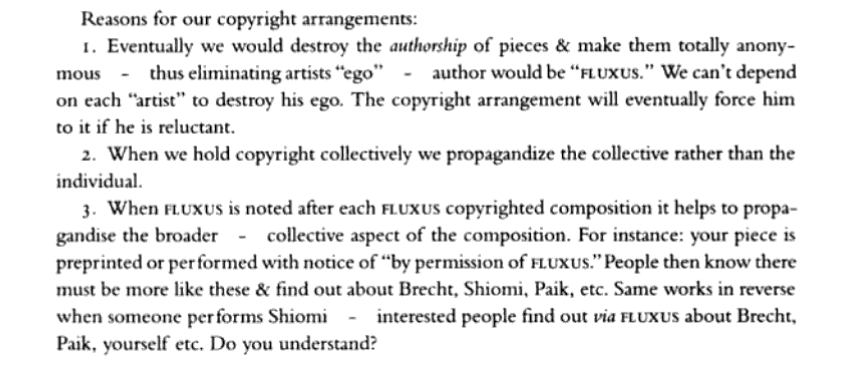

This page includes examples of different people that were exploring attitudes/gestures/(social)-movements towards copyright, before the term “copyleft” was introduced as a legal tool. The techno-legal “hack” of copyleft was introduced by Richard Stallman in 1984. But it’s interesting to see how these examples are all created before that, and were already exploring attitudes of being critical towards copyright laws.


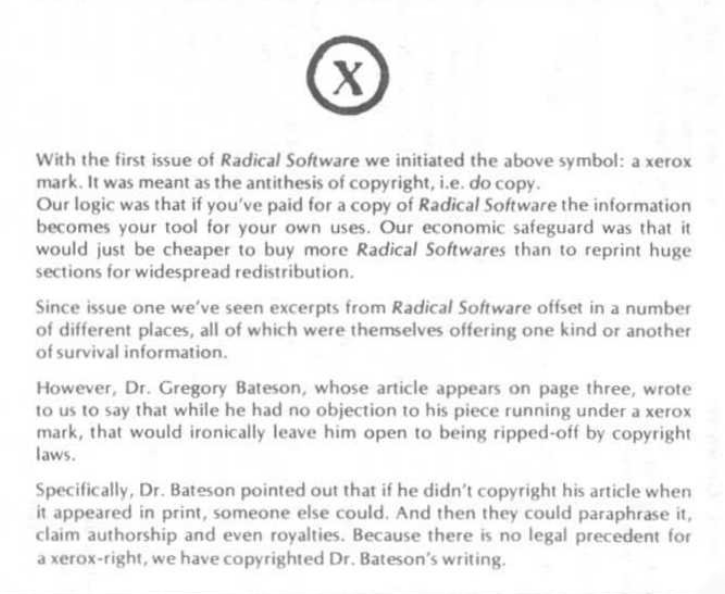

This collection of examples of licensing practices is mainly based on Aymeric Mansoux’s PhD thesis, and specifically on chapter 5.1 (for if you’re curious to read it yourself!). It mentions different variations/formats of copyleft statements, which are transfered in small typographic images on this page.
Aymeric Mansoux, Sanbox Culture (2017) https://www.bleu255.com/~aymeric/dump/aymeric_mansoux-sandbox_culture_phd_thesis-2017.pdf
Aymeric Mansoux, My lawyer is an artist (2011 + 2014) https://www.hz-journal.org/n19/mansoux.html
MacKenzie Wark, From Mail Art to Net.art (2002) https://www.nettime.org/Lists-Archives/nettime-l-0210/msg00040.html
a Xerox Mark - Radical Software, Volume I, Number 3 (Spring 1971) http://www.radicalsoftware.org/e/volume1nr3.html
Georges Machiunas, Letter to Tomas Schmit (1964) + Ben Vautier, “TO CHANGE ART DESTROY EGO” (?) in Theories and Documents of Contemporary Art: A Sourcebook of Artists’ Writings (1996) by Kristine Stiles, Peter Selz https://books.google.nl/books?id=WXV-HlsUzdcC&pg=PA726&dq=GEORGE+MACIUNAS+-+Letter+Tomas+Schmit+(1964)&hl=en&sa=X&ved=0ahUKEwjE1oXm4cHmAhXsQEEAHUzkDhoQ6AEILzAB#v=onepage&q=GEORGE%20MACIUNAS%20-%20Letter%20Tomas%20Schmit%20(1964)&f=false


